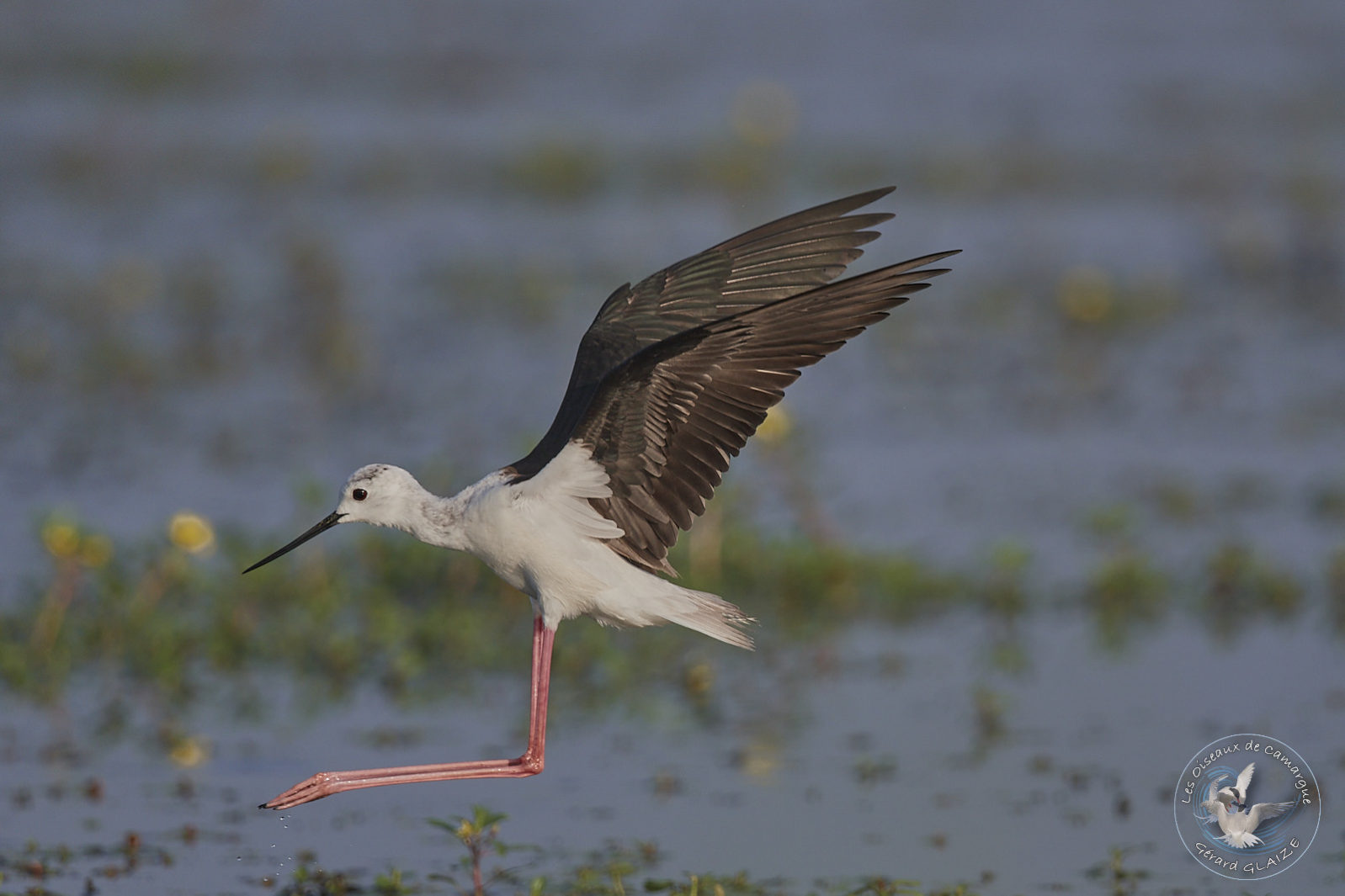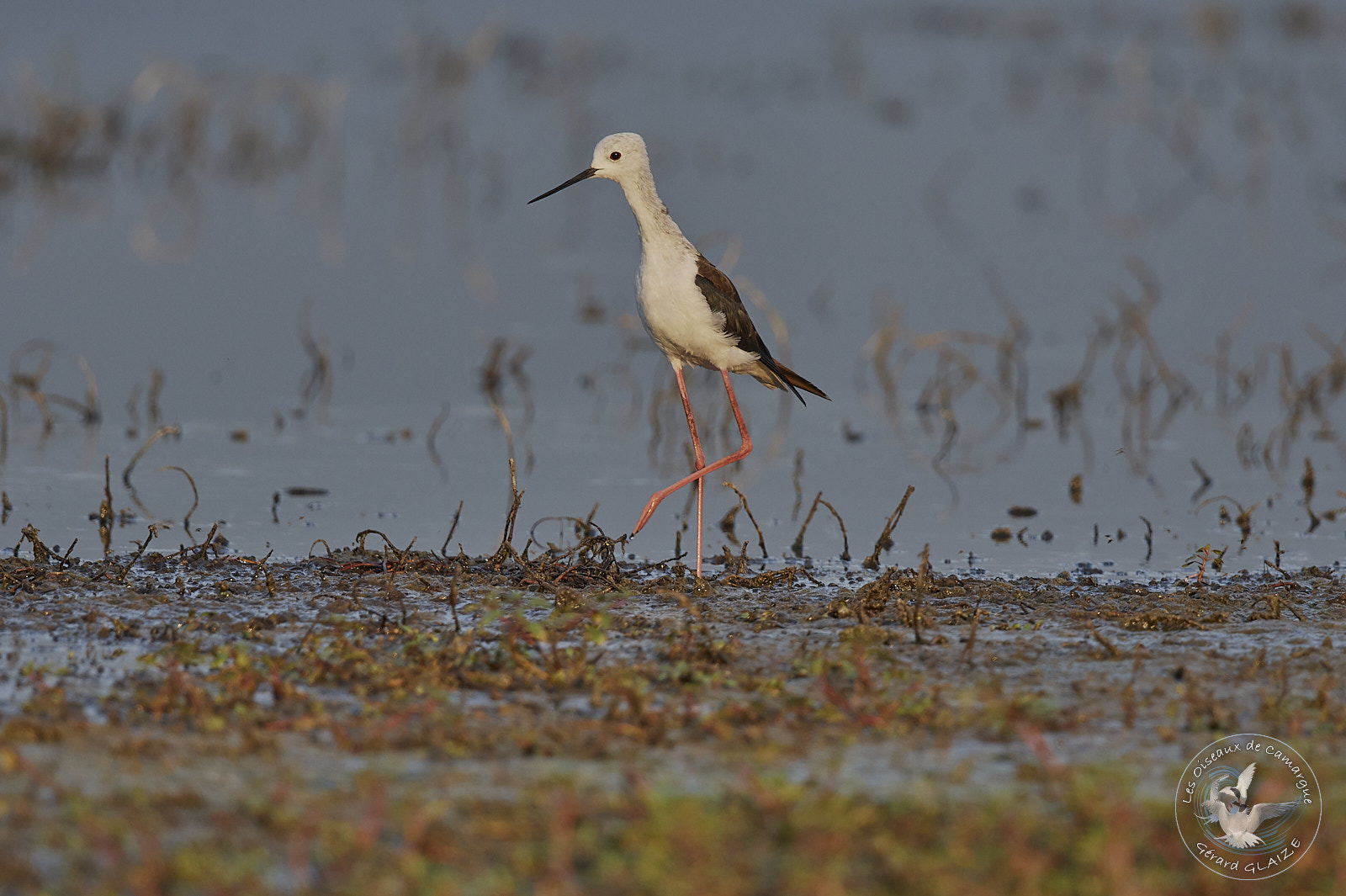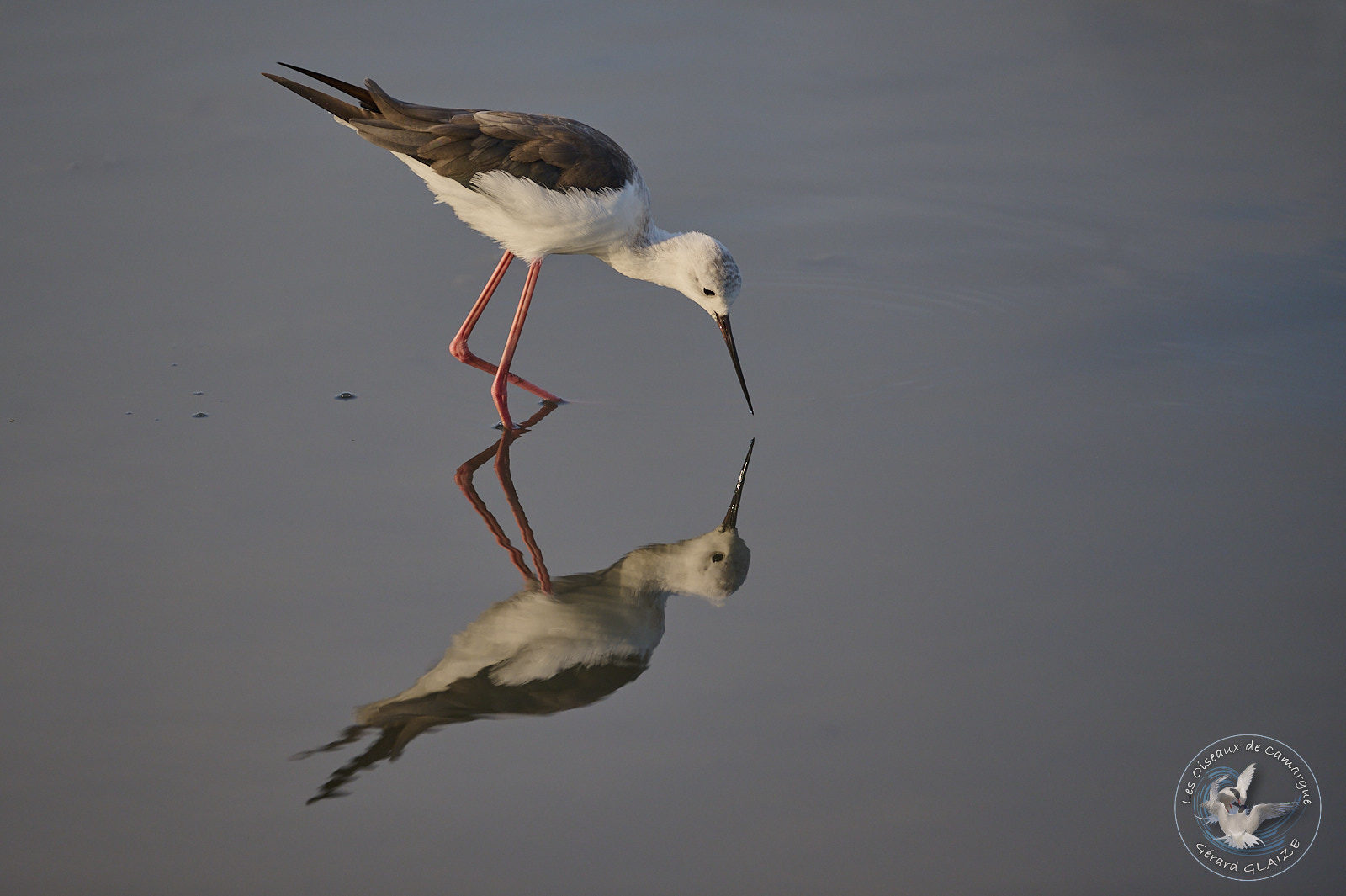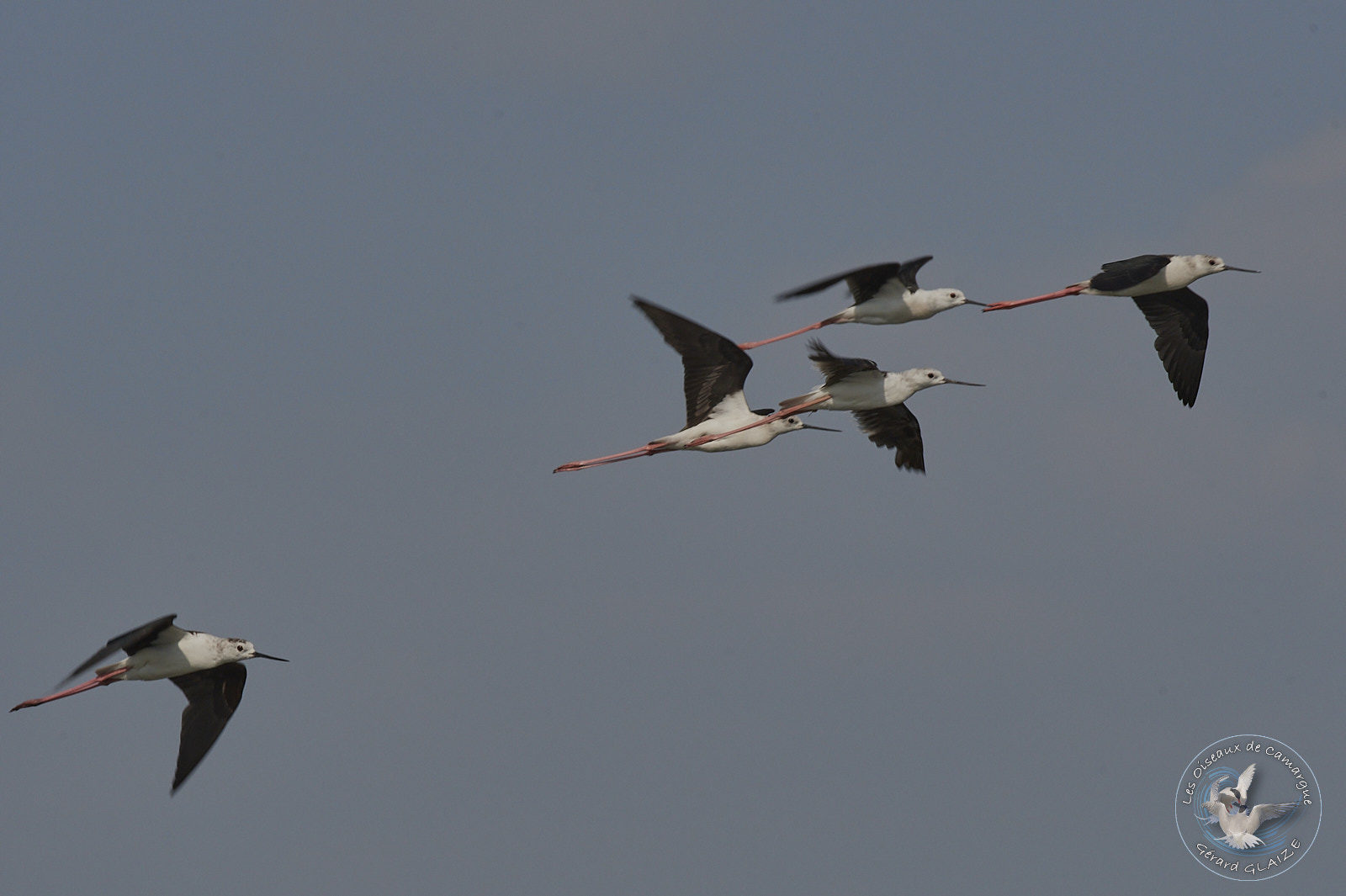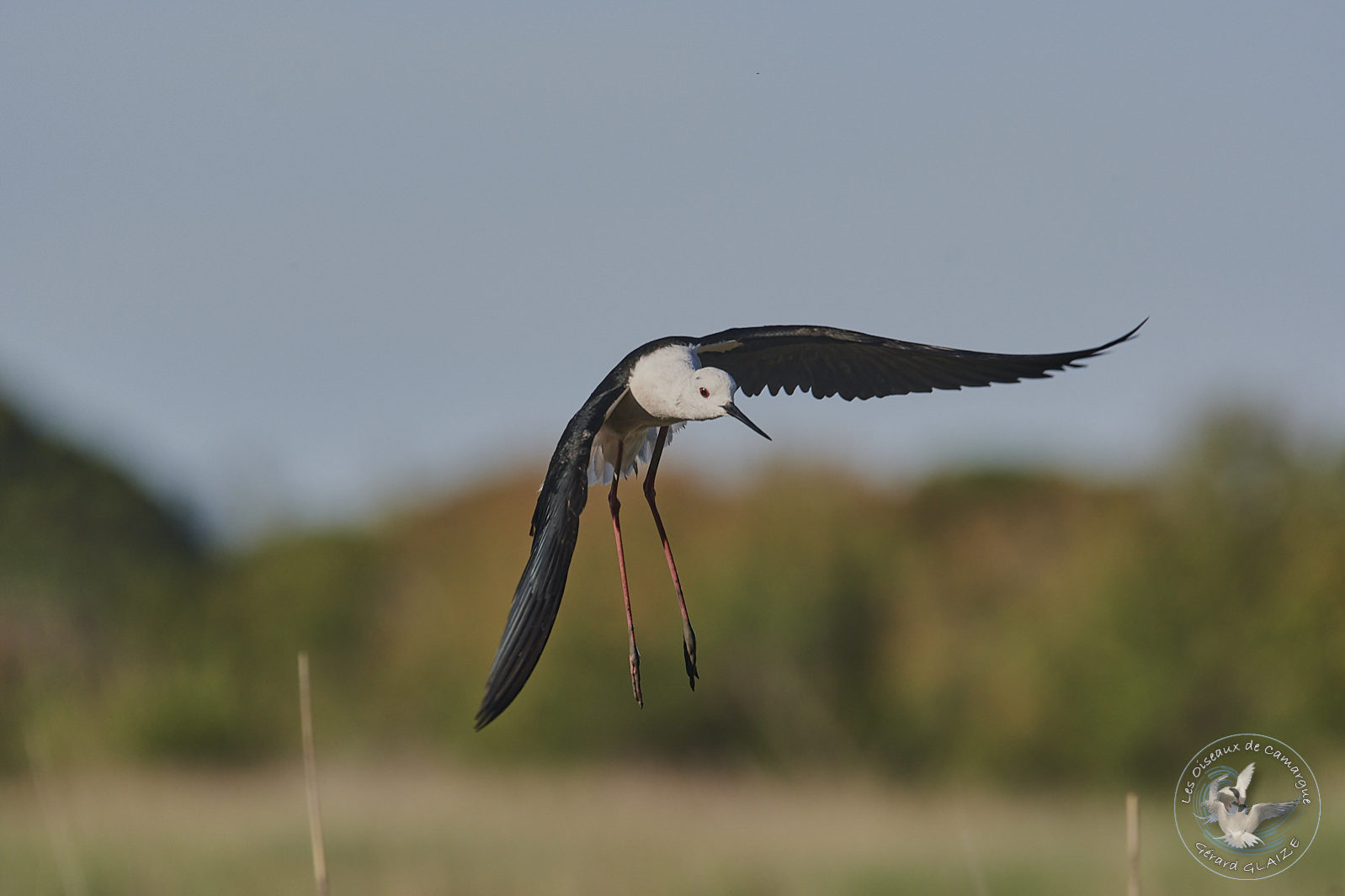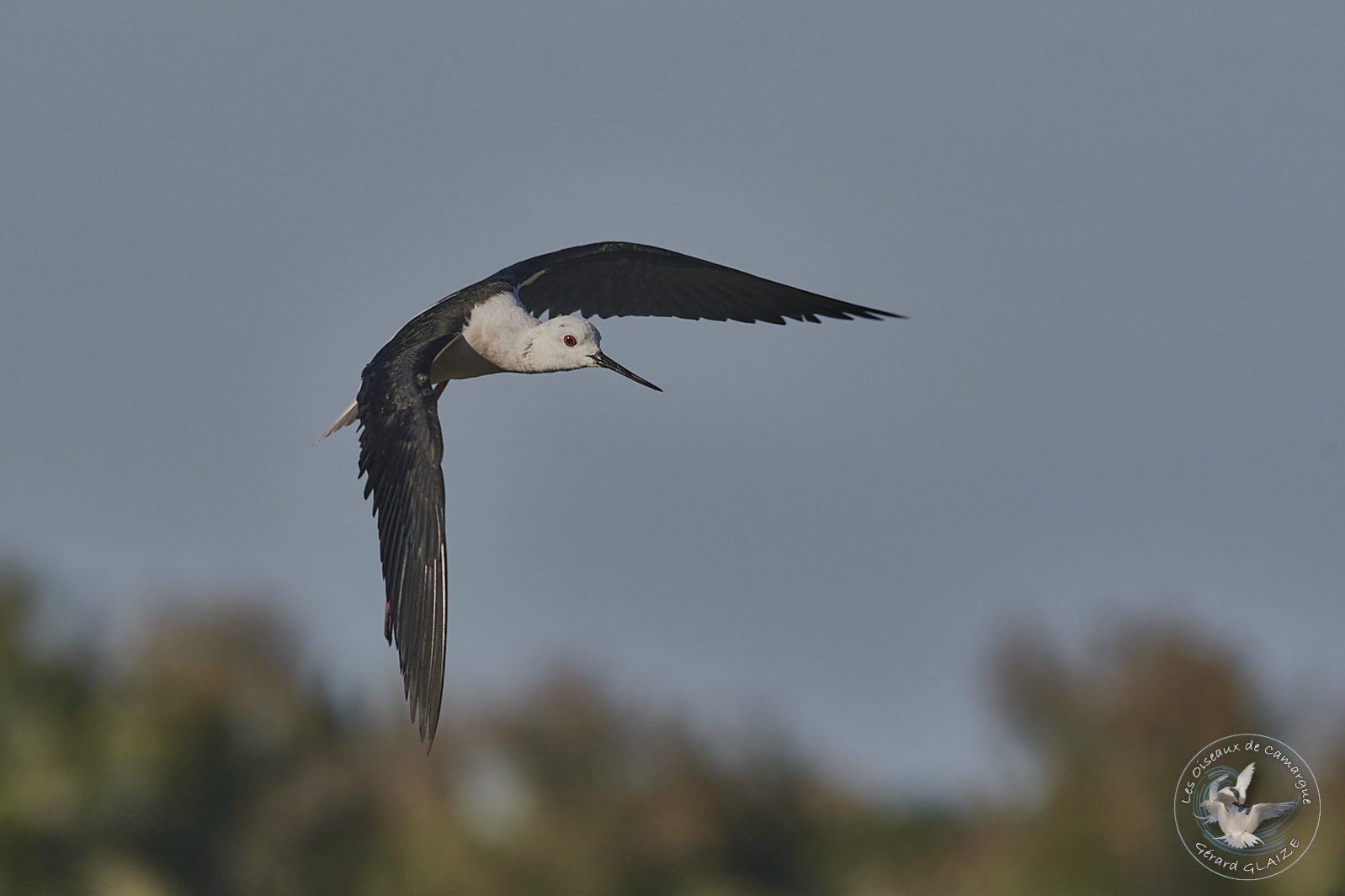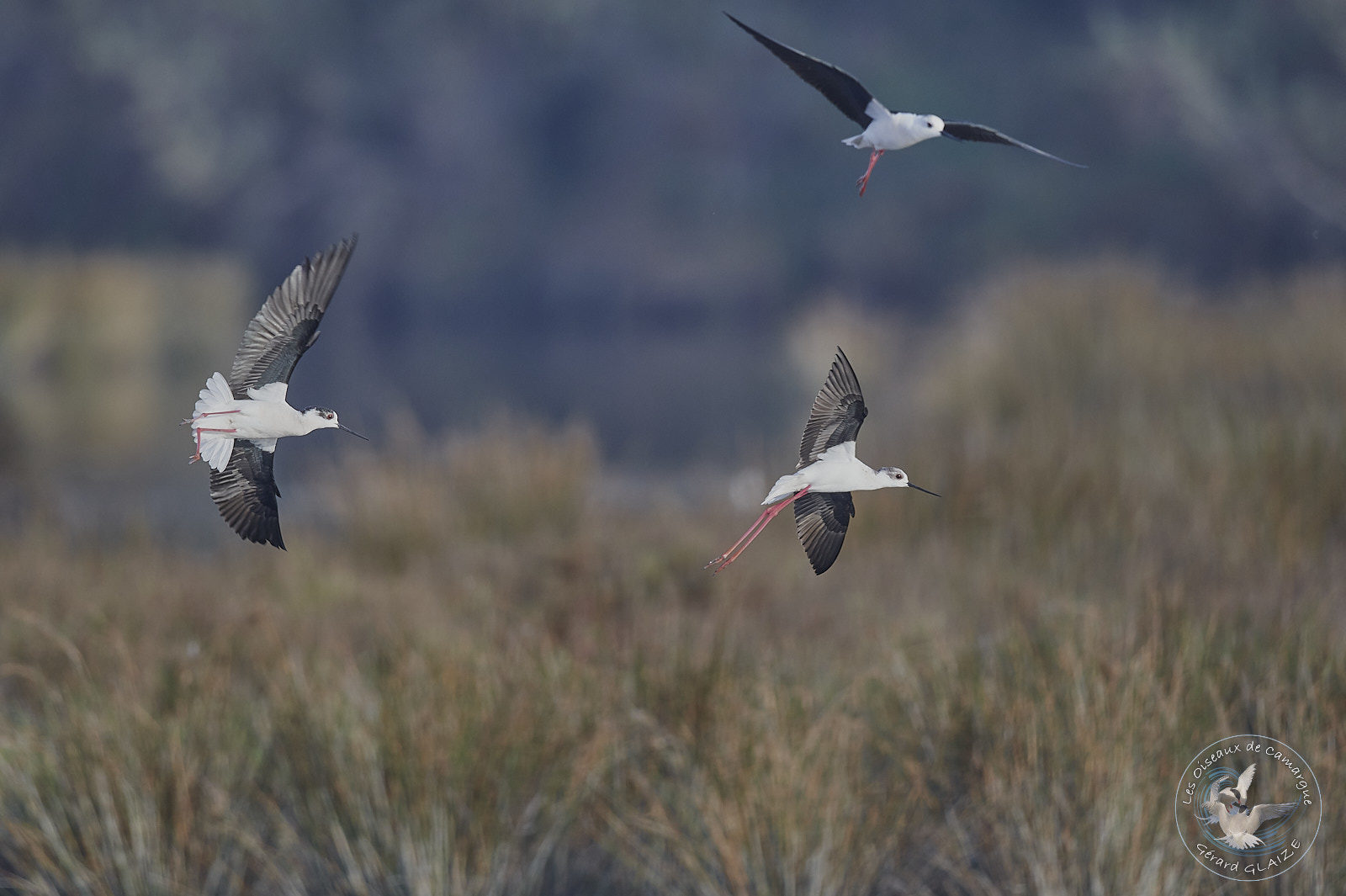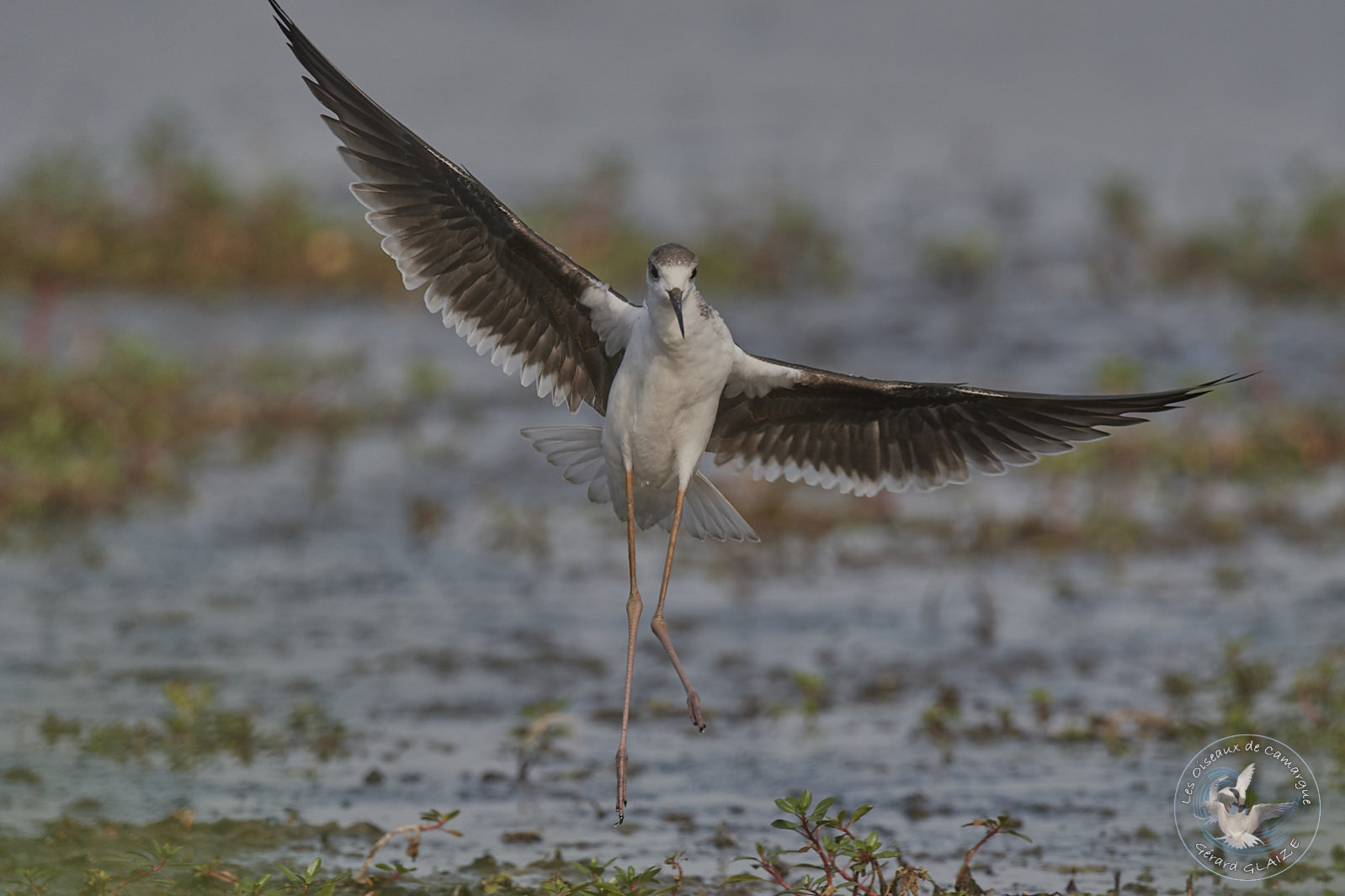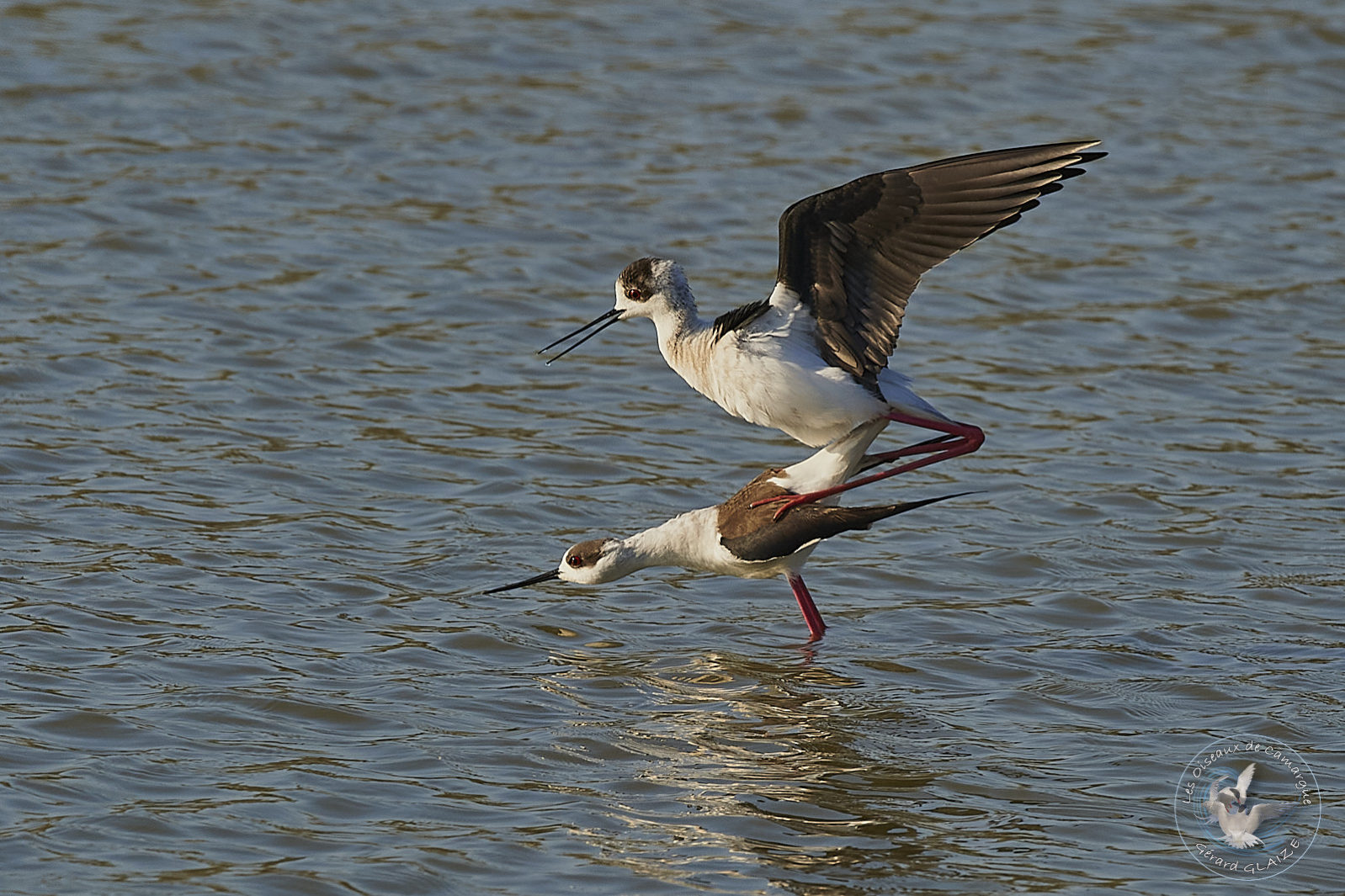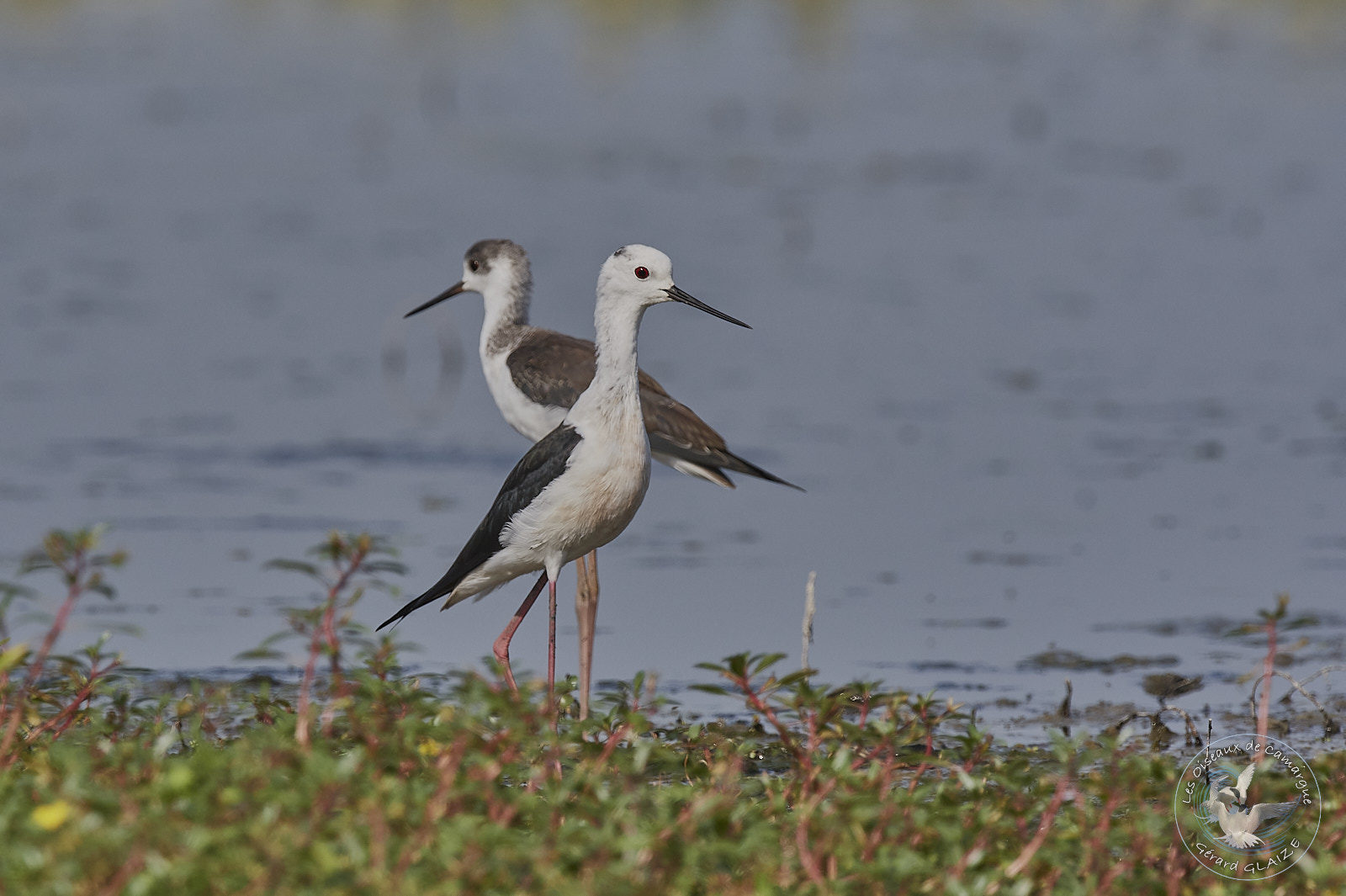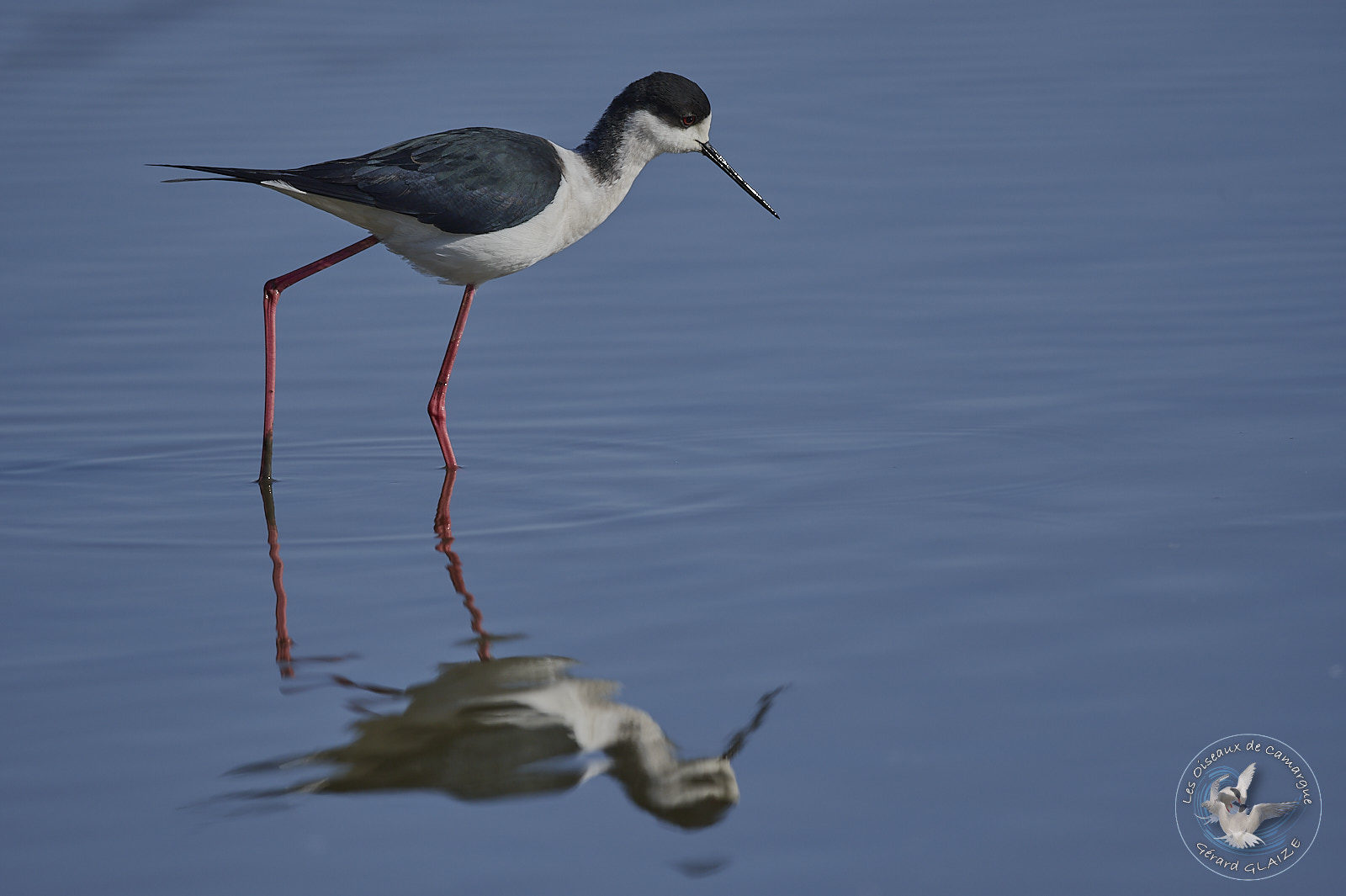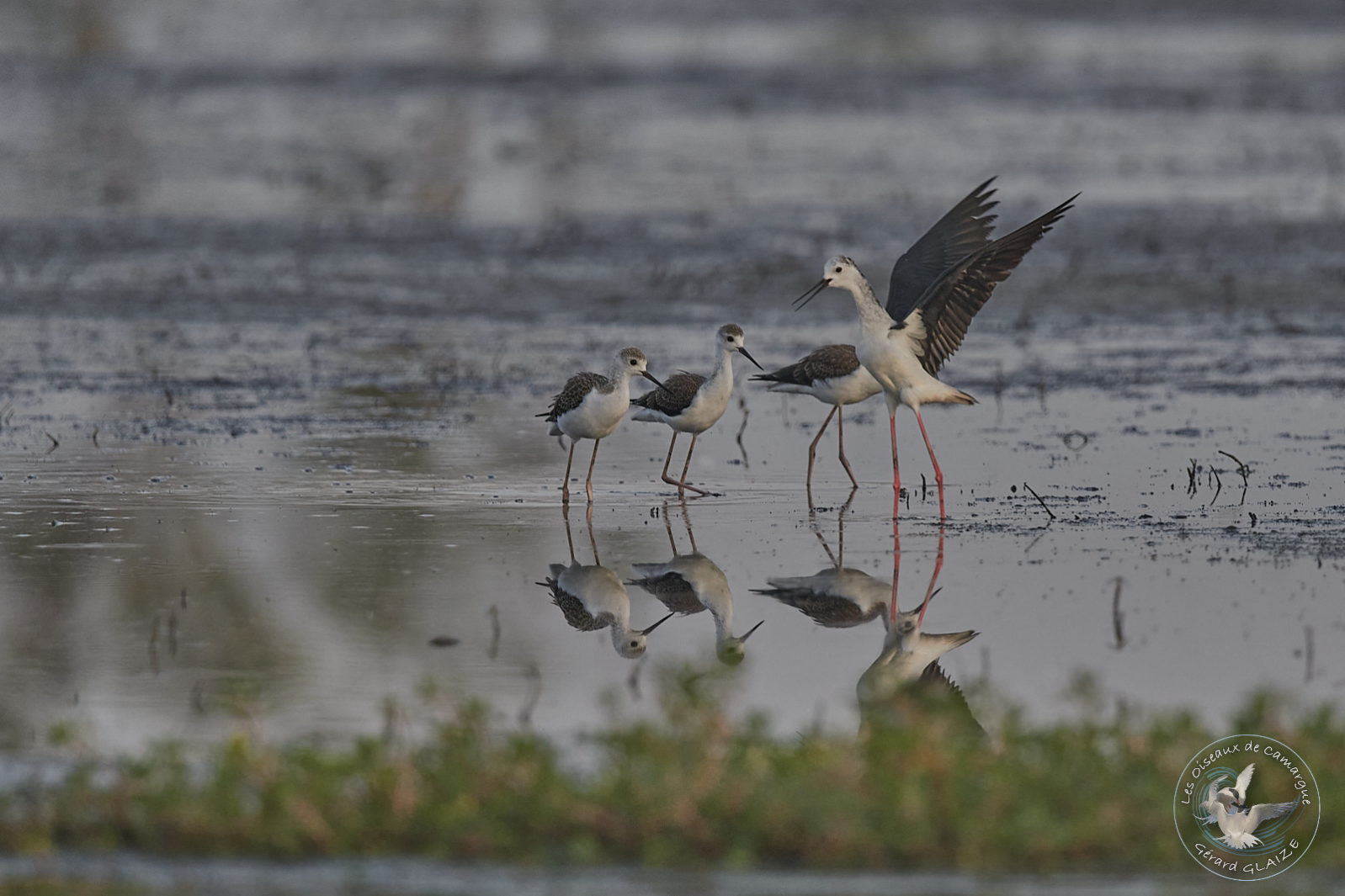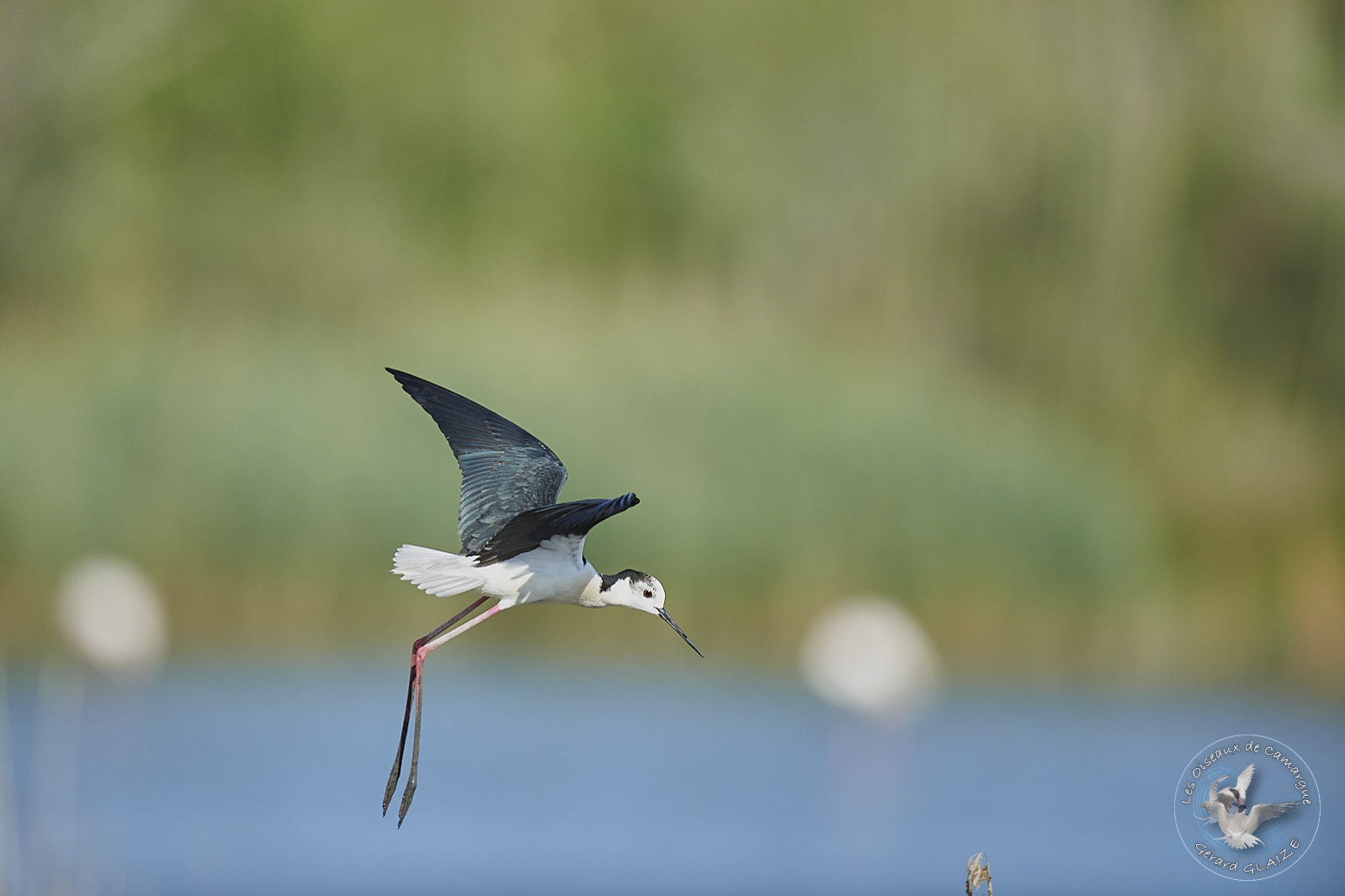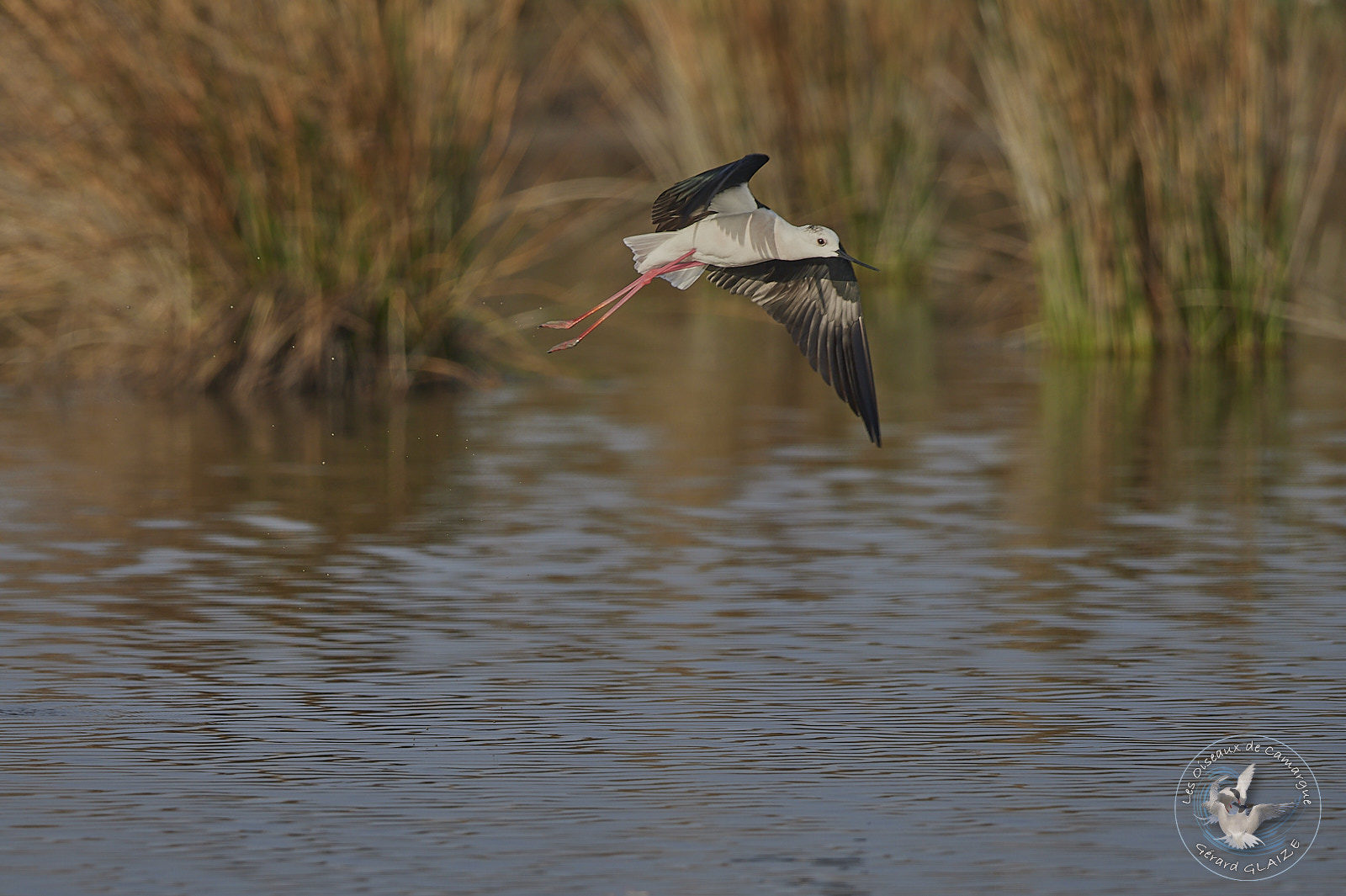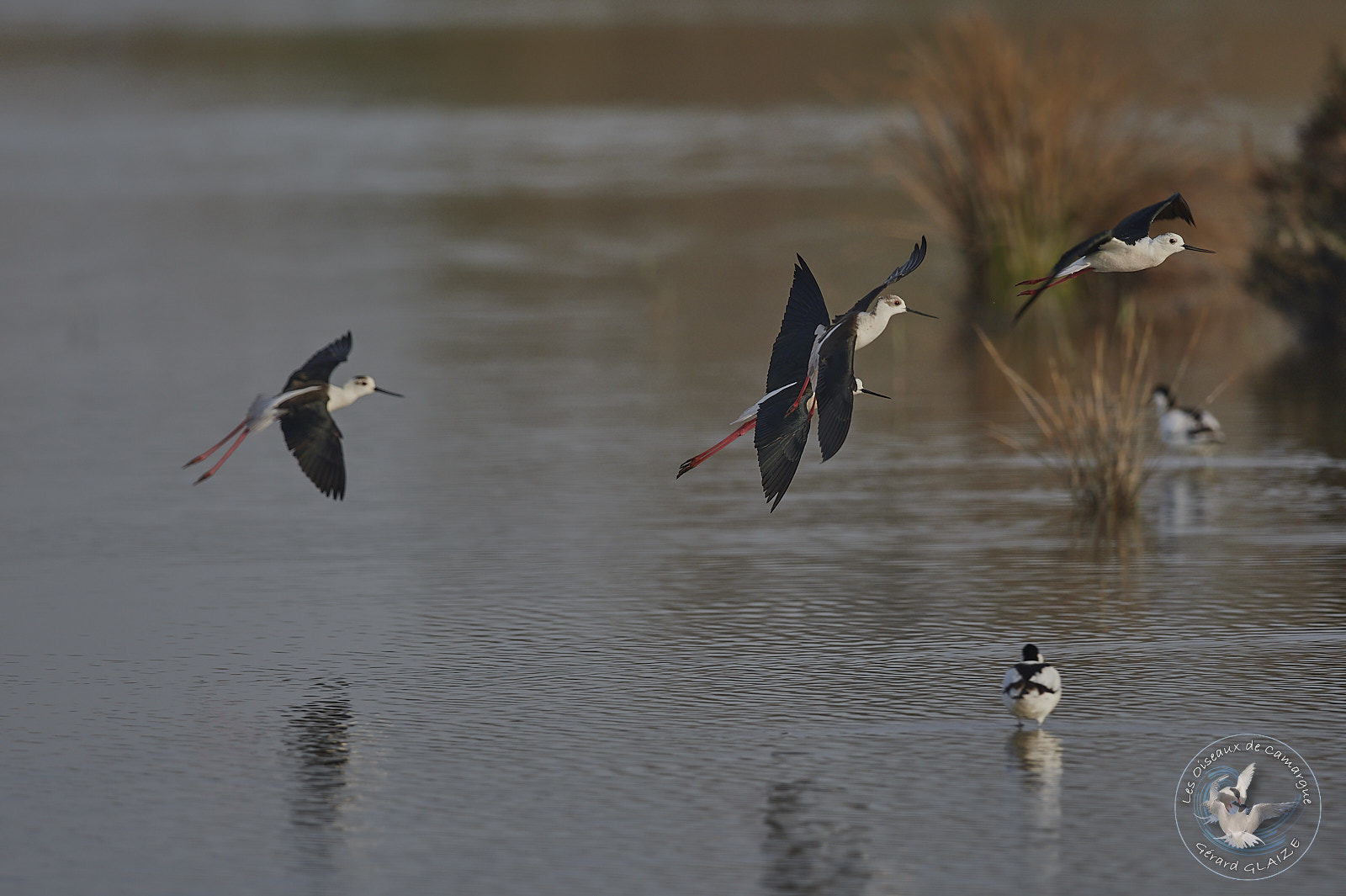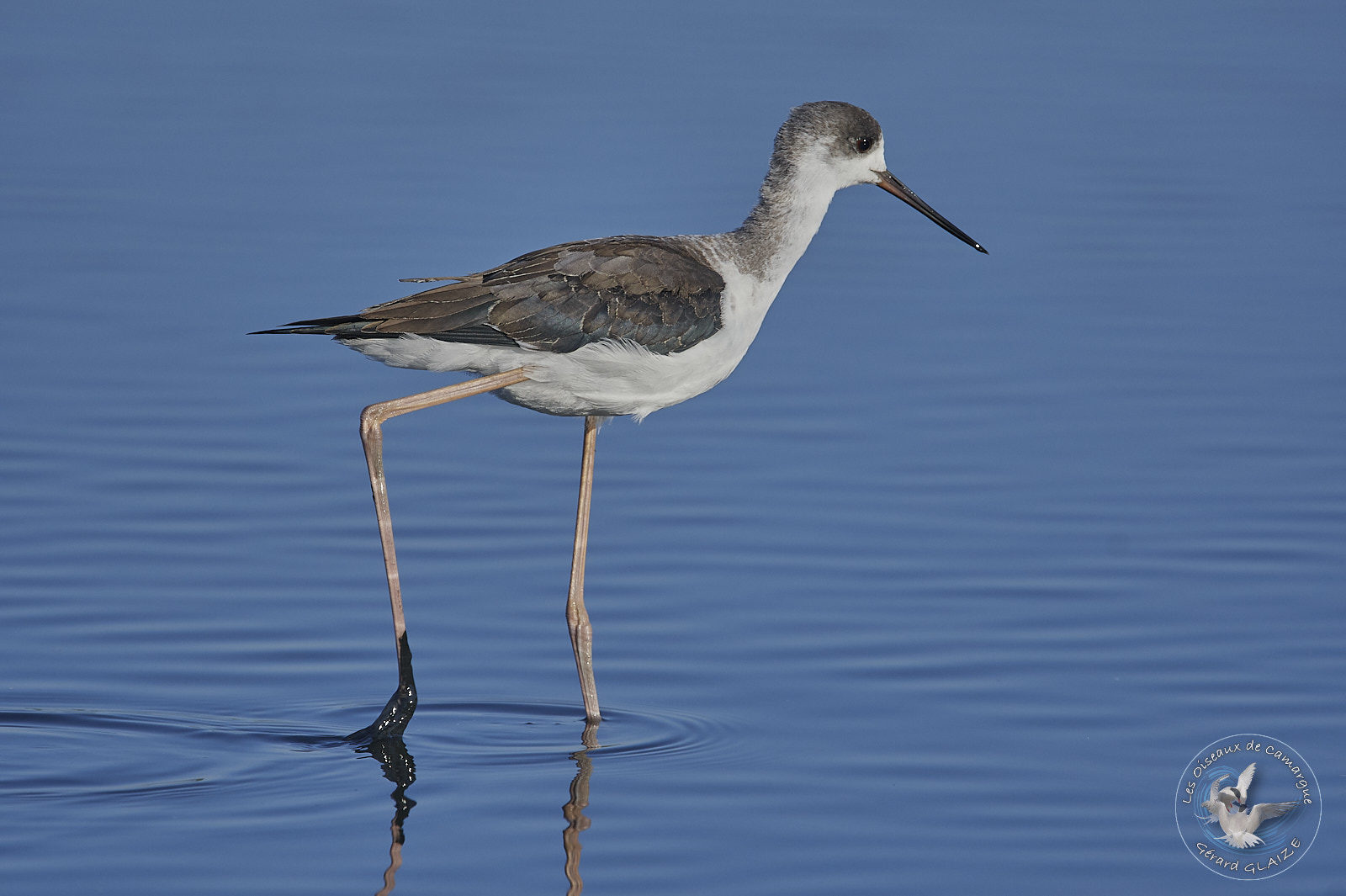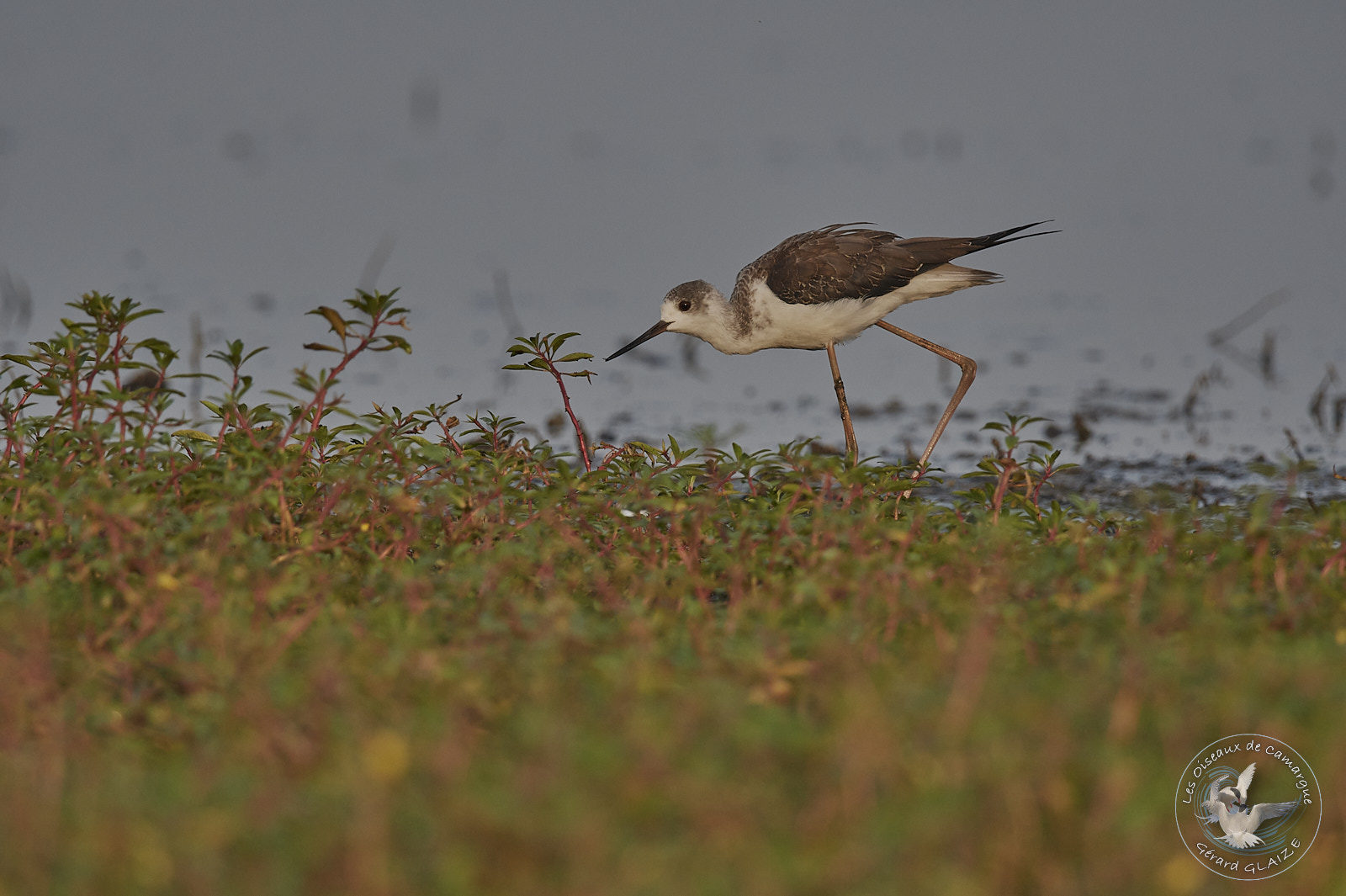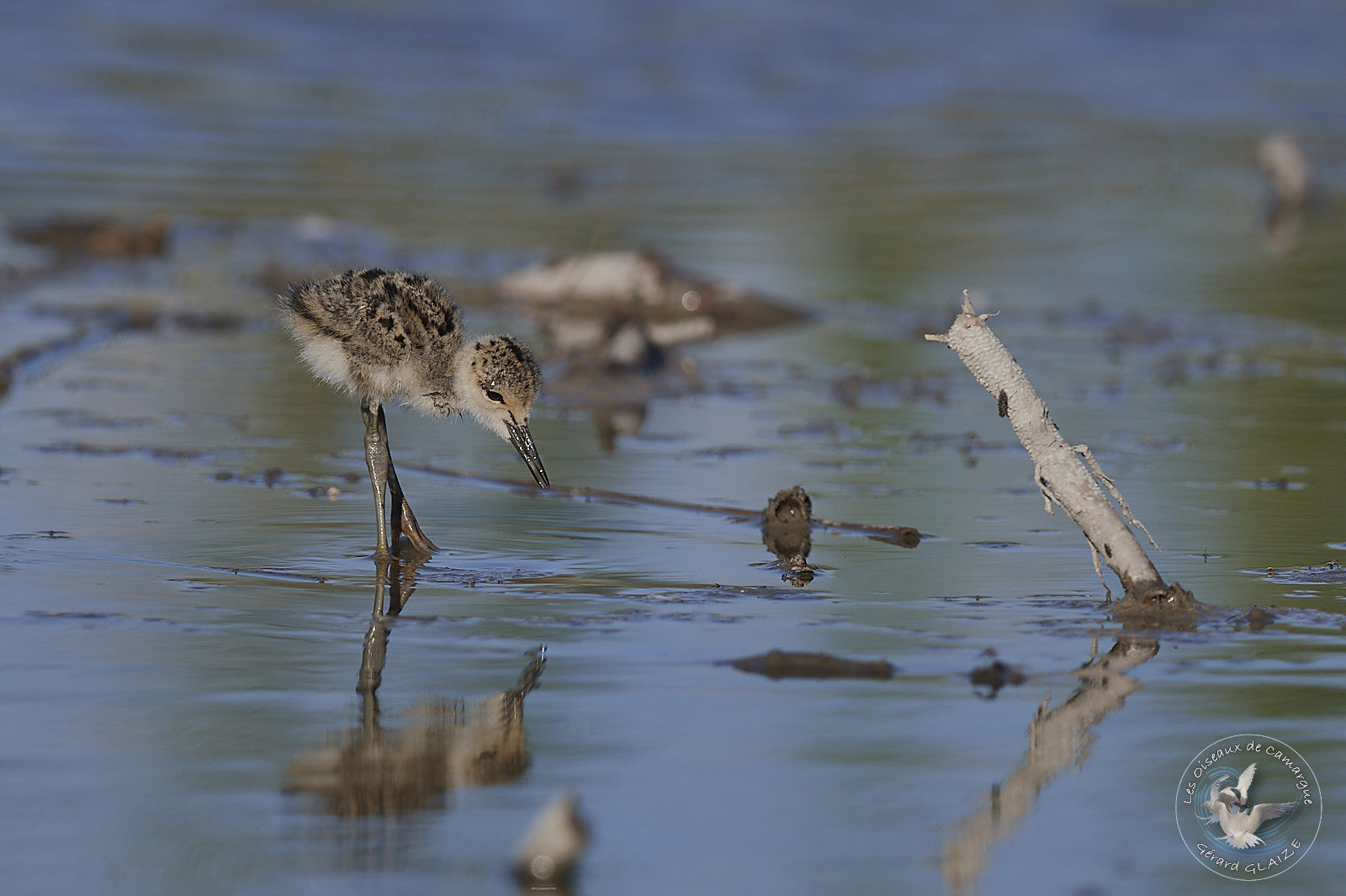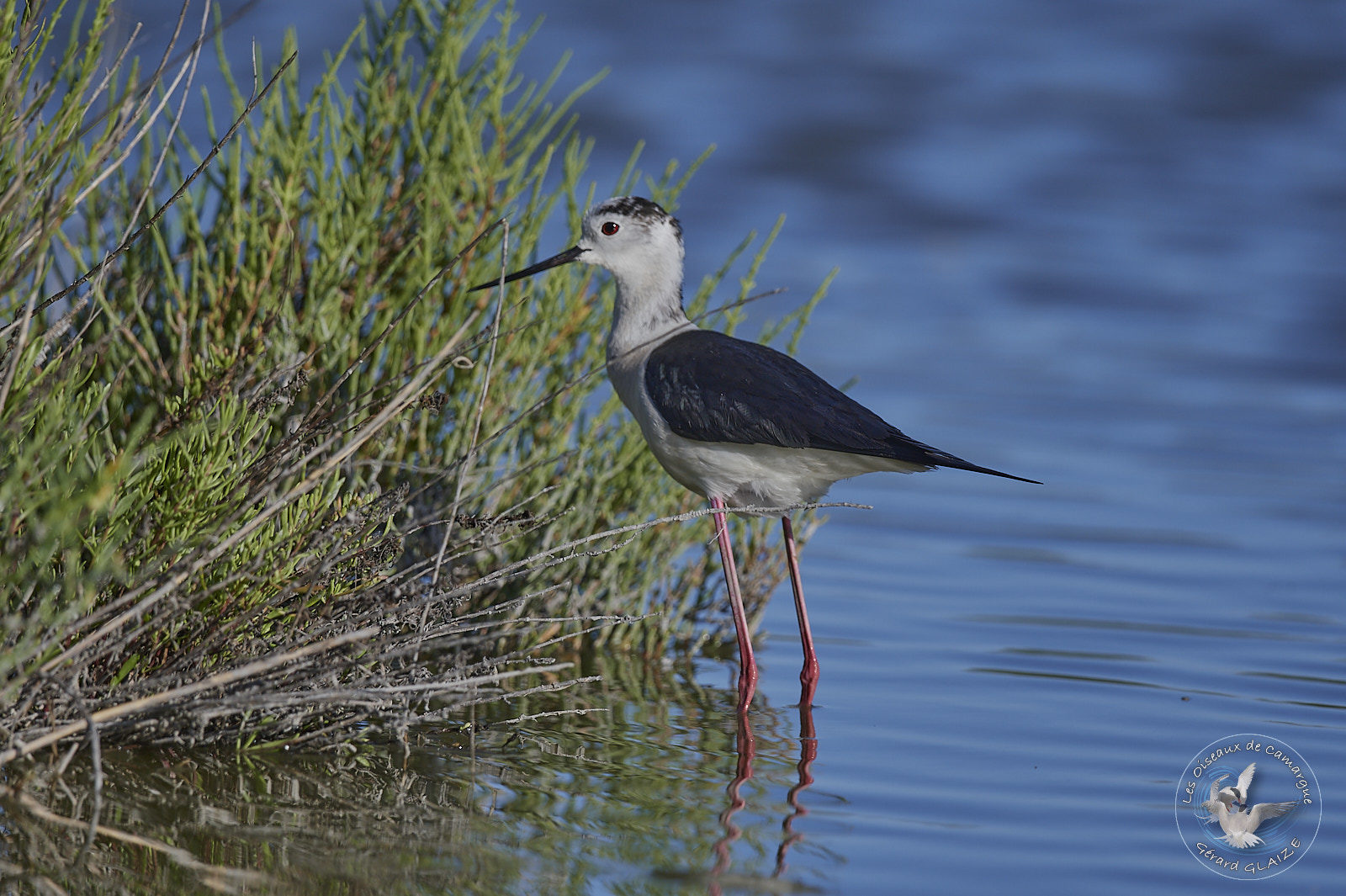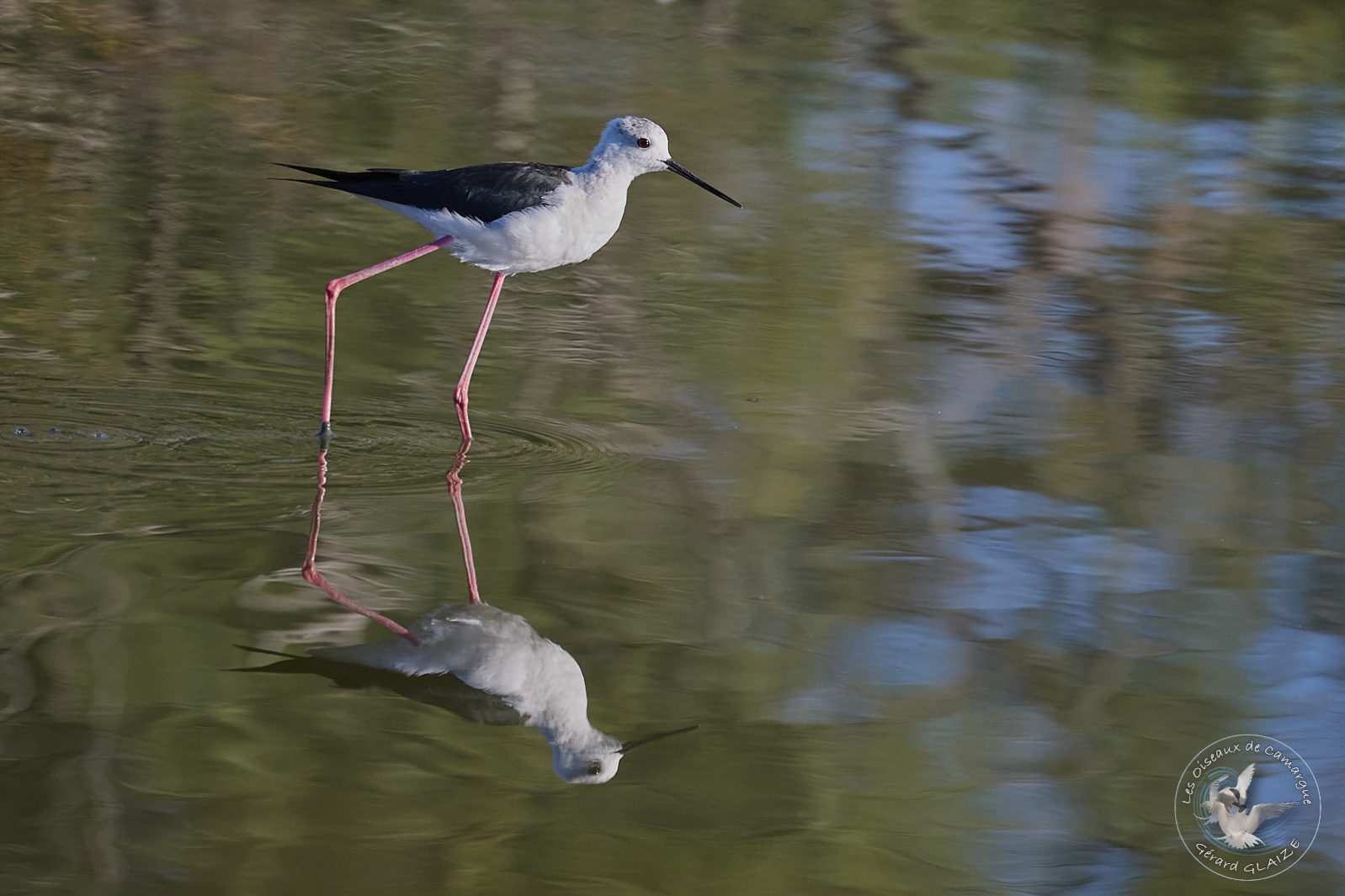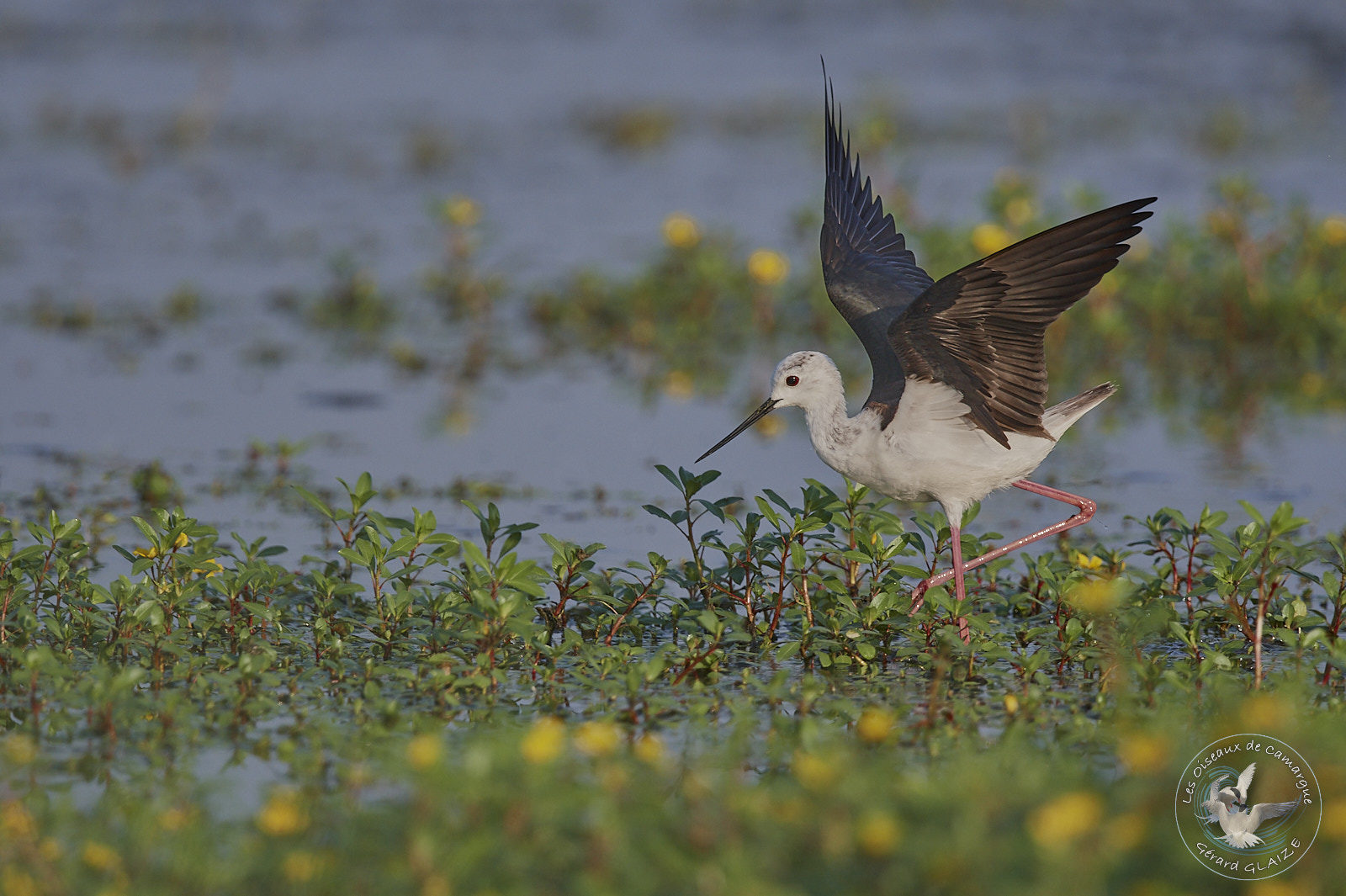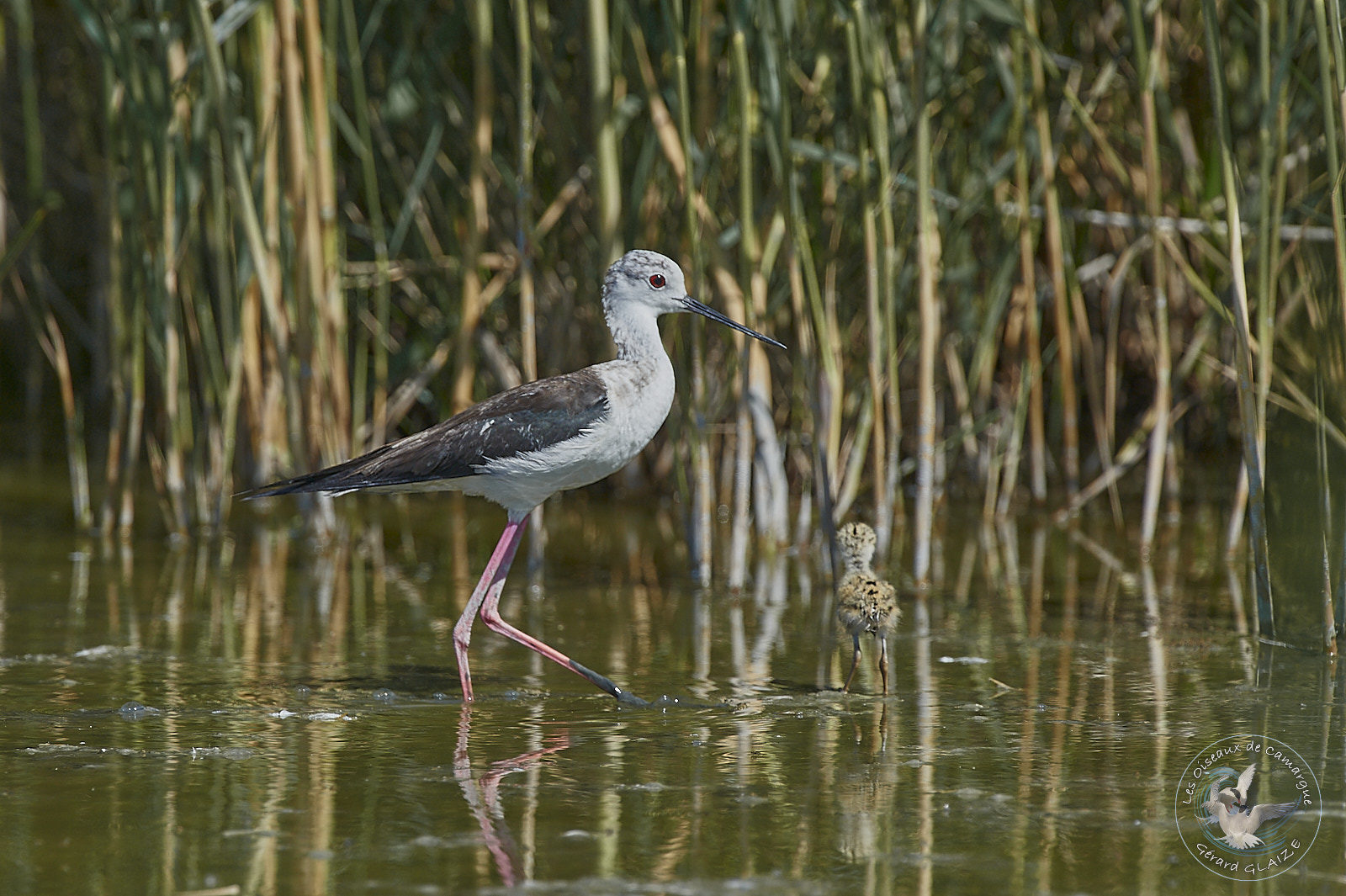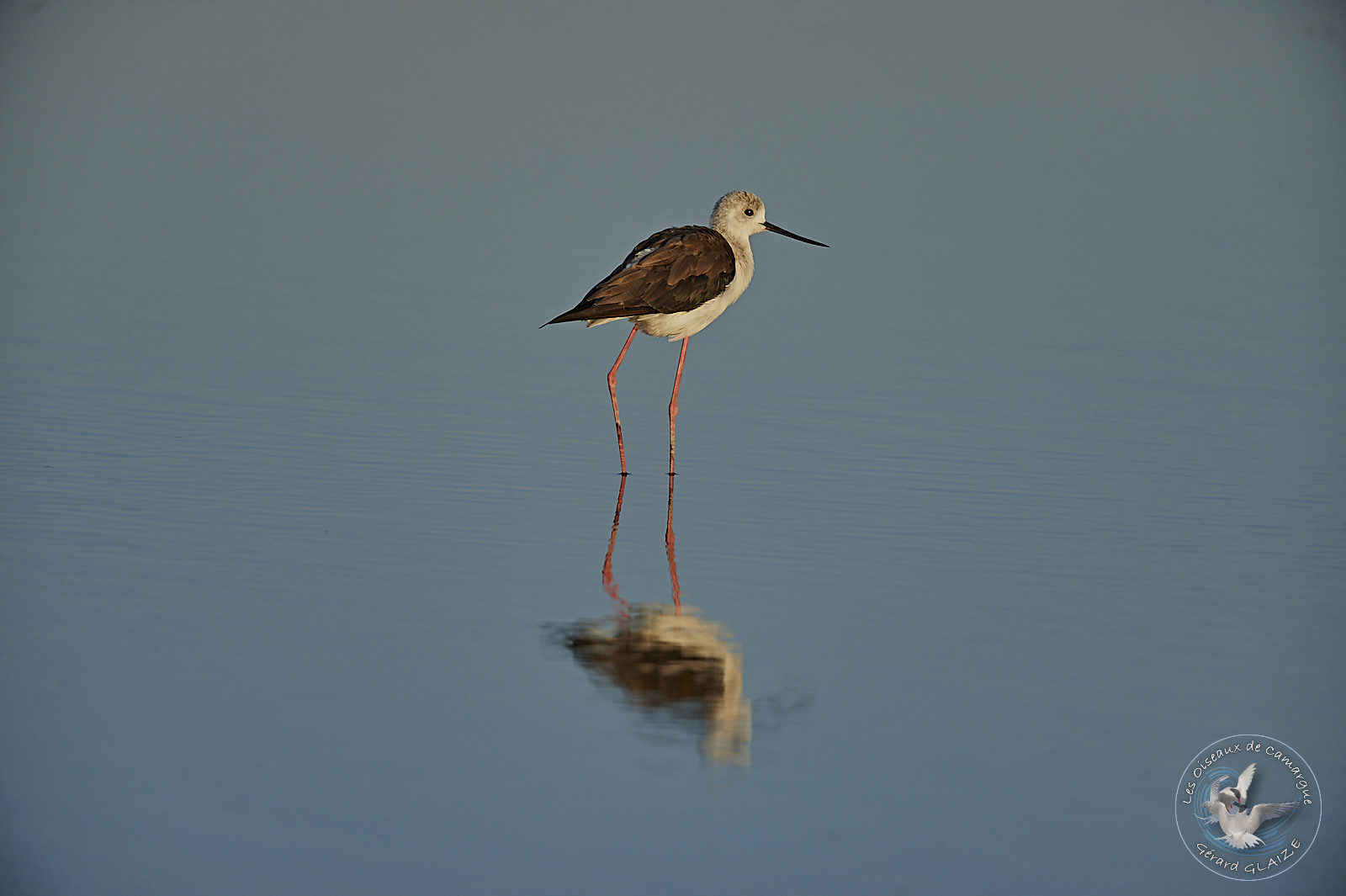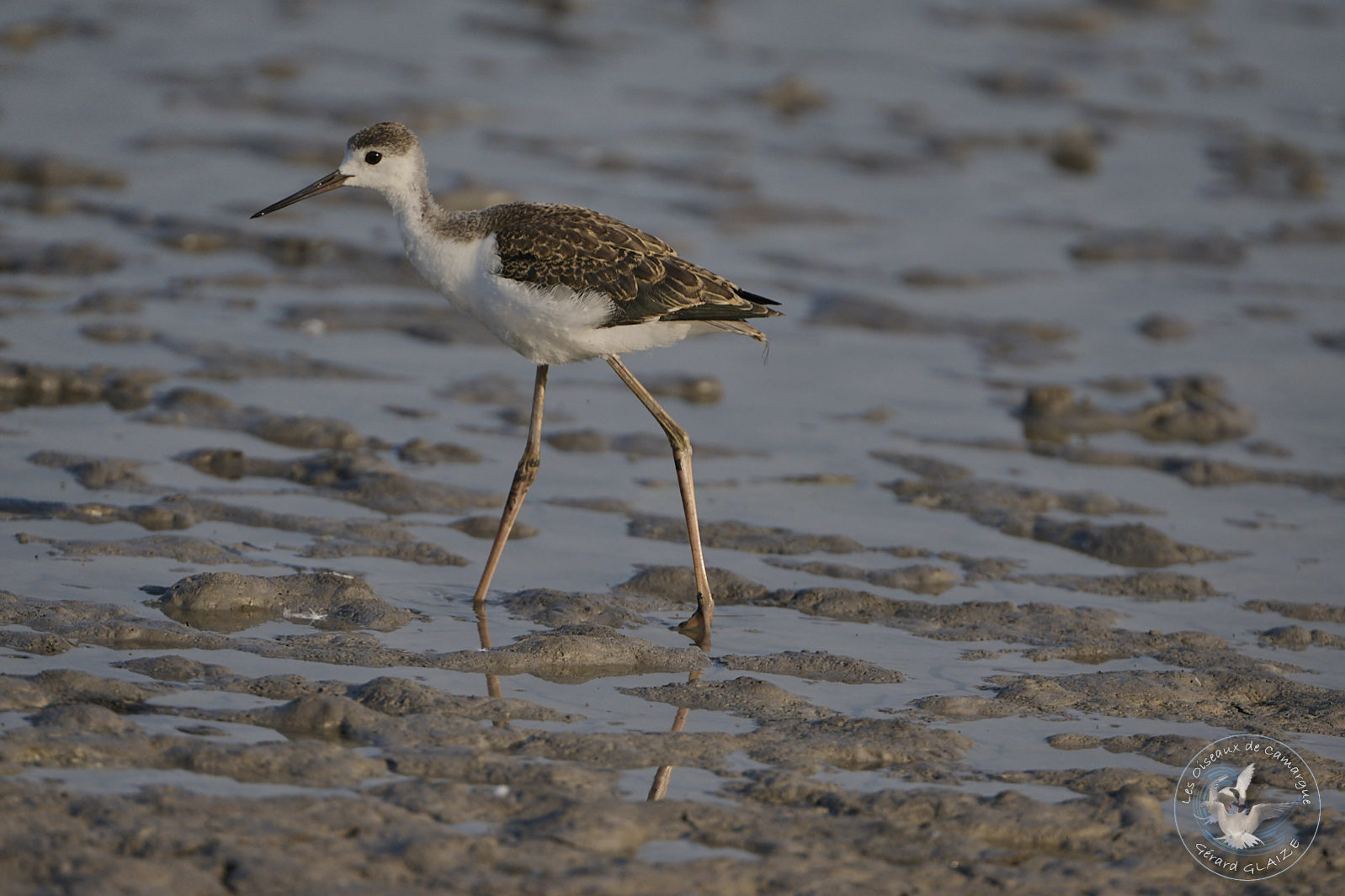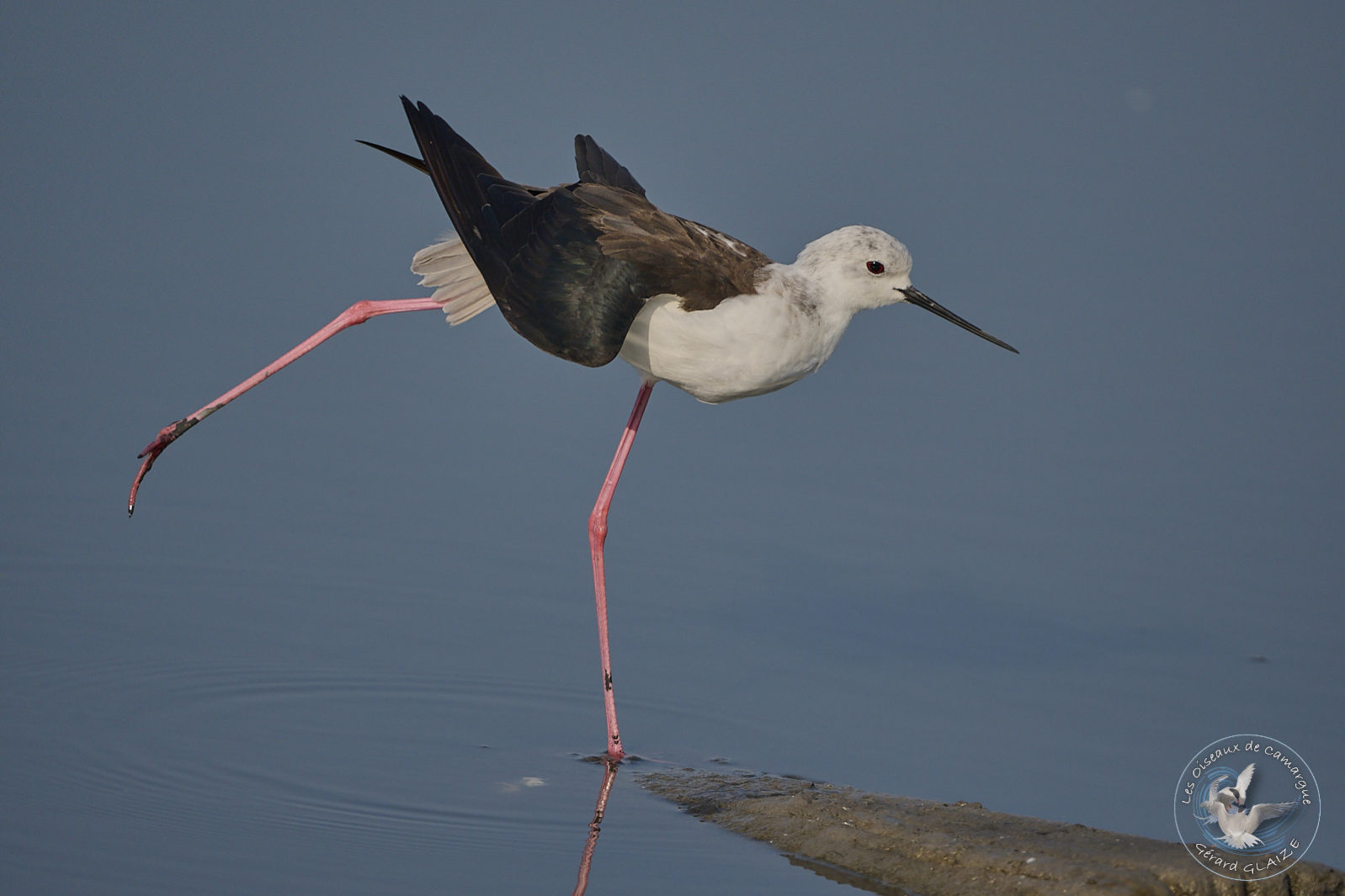Black-winged Stilt
Black-winged Stilt belonging to the group of waders is recognizable by its thin, straight beak, its white body plumage, its black wings, its very long red legs which clearly protrude from the tail in flight. Both sexes are almost alike. The female is brownish while the male is blacker. Juvenile is paler than adult.
Black-winged Stilt
Scientific name : Himantopus himantopus
Family : Recurvirostridae
Length: from 35 cm to 40 cm – Wingspan: from 67 cm to 83 cm
Weight : from 160 gr to 200 gr
IUCN Conservation Status: LC
Flight
The Black-winged Stilt has direct and rapid flight, with rapid wing beats. It flies with its neck slightly outstretched and often quite low, but during migration it can fly at high altitude.
Habitat
The Black-winged Stilt lives mainly near fresh and salt water marshes, and in mudflats, flooded fields and rice paddies. In the Camargue, it is found near stretches of shallow water, generally salty in open areas.
Regime – Diet
It feeds on aquatic insects, worms, tadpoles, larvae, and other small crustaceans and molluscs. Its long pink legs allow the Black-winged Stilt to wade in deep water, while collecting its food on the surface. However, it can dip its head under water to look for food.
Nesting
It generally nests on small islands, nesting takes place from April to June. The nest is a hollow in the mud or sand. It is lined with grasses or leaves, 3-4 eggs are laid in one clutch. Incubation lasts about 25 days, shared by both parents. A dark down covers the chicks at hatching, with gray or blackish-brown spots. The lower parts are white. The chicks are precocial and leave the nest to hide in the surrounding vegetation. Both parents feed the chicks, and these fledge about 4 weeks after hatching. Two to four weeks later they become independent.
Protection
The Black-winged Stilt is not threatened and populations appear to be stable at present. The bird has been fully protected on French territory since 1976. It is listed in Appendix I of the European Union’s Birds Directive. This species is classified as “least concern” by the International Union for Conservation of Nature.
Cry
The Black-winged Stilt’s call is a sharp sound, but we also hear a kind of barking. The alarm call is long, monotonous and high-pitched. These birds are noisy on their breeding grounds.
Other Links
- You can see the article from my site “Birds of Camargue” for more information on the Camargue and the Birds.


